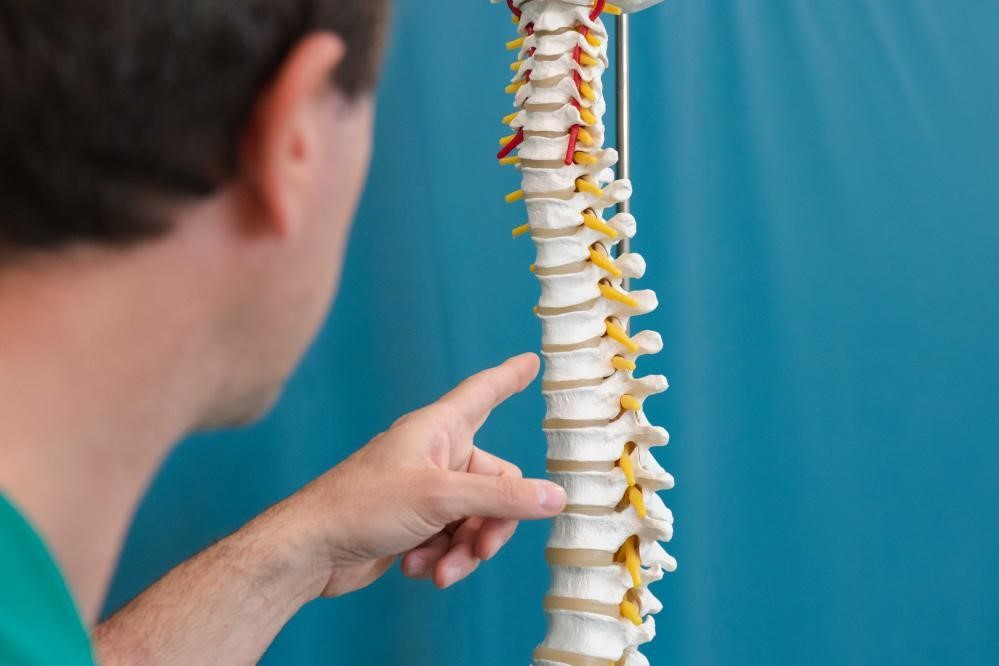
Ankylosing spondylitis, what are the symptoms?
Ankylosing spondylitis is a chronic inflammatory disease that predominantly affects the spine at the dorso-lumbar and cervical levels and the sacroiliac joints
Inflammation of the vertebrae (‘spondylitis’), of which the spine is composed, leads to pain and functional limitation, which typically worsens at rest and improves with ankylosing spondylitis exercises.
We asked the rheumatologist.
Ankylosing spondylitis: the symptoms
Although back pain (lumbago) is an absolutely common experience, the symptoms of ankylosing spondylitis patients have recurring features that can guide the diagnosis.
In fact, the duration of ankylosing spondylitis symptoms must be longer than three months.
In addition, low back pain tends to be accentuated at rest and during the night with nocturnal awakenings due to pain.
Special features also include the fact that low back pain improves with movement and physical activity and that one feels stiff and clumsy when waking up, with the symptoms improving after about an hour.
Ankylosing spondylitis and disability
In the more advanced stages, the inflammatory process can move up the spine and also affect the dorsal and cervical region, with a tendency in the more advanced stages towards vertebral ankylosis, i.e. the formation of bone bridges that join the two joint heads.
In this case, there is an impairment of the normal curvature of the spine.
Almost half of ankylosing spondylitis patients also have peripheral joint involvement.
In particular, the joints of the lower limbs, such as the hips, knees, and ankles, may be affected; more rarely those of the upper limbs (especially the elb and wrists). In this case, the joints are painful, warm, swollen, conditions that completely or partially prevent movement; in these cases we speak of cases with ankylosing spondylitis with a high degree of disability.
Diagnosis of ankylosing spondylitis
The diagnosis of ankylosing spondylitis is generally made on the basis of the clinical picture, laboratory tests, and instrumental tests.
In recent years, treatments for ankylosing spondylitis have made significant progress; today it is possible to slow down or sometimes even stop joint damage.
Ankylosing spondylitis, treatment with drugs and physiotherapy
Drug therapy relies on NSAIDs (non-steroidal anti-inflammatory drugs) and, increasingly, on biological drugs active against a particular molecule (TNFalpha).
But treatment for ankylosing spondylitis also includes physiotherapy Physical activity is, in fact, an integral part of the treatment programme.
There are exercises for ankylosing spondylitis that, if performed daily, help maintain correct posture, help improve joint mobility, and have a pain-relieving effect.
Males are more affected
The disease tends to start at a young age (20-30 years), with males being particularly affected – 3 times more affected than females – and tends to have a very slow evolution.
It is not a frequent disease, in fact it tends to affect less than 0.5% of the population.
The cause is unknown, as for many rheumatological diseases, although it is hypothesised that the contribution of genetic (HLA-B27 gene and others) and environmental (common infections) factors may favour its onset.
Read Also
Ankylosing Spondylitis: What Is It And How Is It Diagnosed?
Prehospital Spine Immobilization In Penetrating Injuries: Yes Or No? What Do Studies Say?
Spinal Column Injuries, The Value Of The Rock Pin / Rock Pin Max Spine Board
Spinal Column Immobilisation Using A Spine Board: Objectives, Indications And Limitations Of Use
Emergency Live Even More…Live: Download The New Free App Of Your Newspaper For IOS And Android
Spinal Immobilization: Treatment Or Injury?
10 Steps To Perform A Correct Spinal Immobilization Of A Trauma Patient
Spinal Column Injuries, The Value Of The Rock Pin / Rock Pin Max Spine Board
Spinal Immobilisation, One Of The Techniques The Rescuer Must Master
Electrical Injuries: How To Assess Them, What To Do
RICE Treatment For Soft Tissue Injuries
How To Carry Out Primary Survey Using The DRABC In First Aid
Heimlich Maneuver: Find Out What It Is And How To Do It
What Should Be In A Paediatric First Aid Kit
Poison Mushroom Poisoning: What To Do? How Does Poisoning Manifest Itself?
Hydrocarbon Poisoning: Symptoms, Diagnosis And Treatment
First Aid: What To Do After Swallowing Or Spilling Bleach On Your Skin
Signs And Symptoms Of Shock: How And When To Intervene
Wasp Sting And Anaphylactic Shock: What To Do Before The Ambulance Arrives?
UK / Emergency Room, Paediatric Intubation: The Procedure With A Child In Serious Condition
Endotracheal Intubation In Paediatric Patients: Devices For The Supraglottic Airways
Sedation And Analgesia: Drugs To Facilitate Intubation
Intubation: Risks, Anaesthesia, Resuscitation, Throat Pain
Spinal Shock: Causes, Symptoms, Risks, Diagnosis, Treatment, Prognosis, Death


